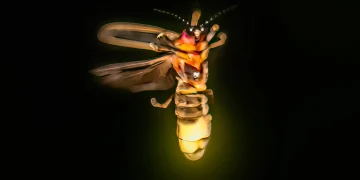
More than 600 journalists across Reach nationals and regionals have been told their jobs are at risk as the publisher plans a net cut of 186 people in a major editorial reorganisation.
The proposals include making 321 editorial redundancies and creating 135 new roles, which will be opened initially only to internal candidates with priority given to those whose roles are at risk.
The new roles will include many in video and the live news network, a central team being created to cover general news, including breaking news, events and diary stories, across the UK and Ireland. The network will feed news coverage into Reach’s national and regional brands, which include the Mirror, Express, Daily Star, Daily Record, Liverpool Echo and dozens of regional ‘Live’ sites.
[Read more: Reach to ‘radically reorganise’ editorial structure with one live news team]
Press Gazette understands the new roles being created include a south west news content editor, head of news for Yorkshire and video editor in Liverpool. New “everyday journalism video teams” are being built.
As well as the creation of the live news network, the restructure is focusing on generating more video and audio and less text-only content, as well as on building the identity of individual brands as the publisher prepares to create digital subscription products starting with the Manchester Evening News. A head of digital subscriptions is currently being recruited.
Chief content officer David Higgerson said: “Our new structure represents the biggest reorganisation we’ve ever undertaken, even more than in the early days of the digital revolution. The changes we are seeing in the landscape right now demand a wholesale change in how we operate and how we tell stories.
“For our editorial teams, we will need to adopt a different way of working from top to bottom, as we match our resources to our ambitions. It will mean that some jobs will sadly no longer exist, many will change, and around 135 new roles will be created, many in our live news network and video teams.”
Reach has previously made bigger rounds of redundancies – including 450 in November 2023 and around 700 that year in total. But this restructure is appaarently a more fundamental change in the way the editorial teams across nationals and regionals are structured.
[Read more: Express editor-in-chief moves into wider role in Reach leadership reshuffle]
Already this year Reach has created a new structure for its sports coverage, creating one sports hub by merging many of its national and regional teams with about 40 redundancies (down from an earlier estimate of 50).
Press Gazette understands restructuring has also taken place between June and August in non-editorial teams like commercial, HR and other central functions.
Reach to tell news stories using ‘people closest to them’
Last year Reach created a content hub with about 300 journalists moved into a central team aimed at creating traffic-driving content about verticals like trends, wellbeing, screen time and money. The hub is now expanding to also cover travel and gaming, creating new roles.
The live news network will have journalists based in newsrooms across the UK and Ireland but reporting into editorial director for news Paul Rowland to cover the biggest news stories. Those brands will also continue to have some, but fewer, dedicated reporters working only for them.
There are nine editors-in-chief for Ireland, Scotland, Wales and English regions who will be reporting to Rowland while a new head of news, currently being recruited, will lead the network’s central news hub..
Higgerson said in a memo to staff that this structure means Reach can “better serve our purpose of being where people live. Our goal is to have a wider reach, to make sure the news stories we tell are created by people closest to them.”
He also said: “Our brands will benefit from the work of our live news network, sports team and content hub, so they will have smaller teams dedicated to super-serving their target audiences, so their journalism is sought out, remembered and widely read.”
The UK-wide national titles will continue to have their own editors-in-chief – Caroline Waterston at the Mirror and the celeb magazines, Geoff Maynard at the Express and Ben Rankin at the Star – who will be “responsible for maintaining and developing distinctive brands with growing, loyal audiences”.
Print production and picture desks are among the areas that are expected to see smaller teams following the restructure.
Former Reach Scotland editor-in-chief David Dick is now head of print (nationals) and, under him the design, prodution and subbing teams for the English and Scottish nationals are being brought together.
Higgerson told staff: “This smaller team will work across all National titles, allowing for more content sharing and streamlined designs. Our Ireland print production team will also share more content and designs.”
He added: “The imaging team will use our automated cut and colour correction system across our national titles, so a smaller team can focus exclusively on supporting magazines.
“We’ll centralise the pictures team to work alongside the new live news network. This smaller team will focus on generating picture and video content for individual brands or to be shared across our portfolio.”
Reach had an average of 2587 production and editorial staff in 2024, down from 2994 in 2023.
NUJ says ‘scale’ of restructure is ‘devastating body blow’ to staff
The National Union of Journalists (NUJ) said it “decried” the scale of the planned job cuts and that it is seeking further inforamtion about the role AI will play in the restructure.
NUJ national Reach coordinator Chris Morley said: “Yet again, morale is being dragged down by the threat of mass redundancies of journalists whose only crime is to work hard and strive to reach massive audiences with quality journalism each day.
“The thought that any media business can afford to shed hundreds of talented journalists to secure its future makes you wonder what sort of future that will be.”
He added: “The scale of today’s announcement, while trailed by Reach, comes as a devastating body blow to staff who have done all that is asked of them and more in the last year to make a success of this business.
“The latest strategy to the digital promised land does come with some attractive pledges but we are not sold that the route taken to achieve it is necessarily the right one. We are sceptical that the way to develop the group’s distinctive and popular brands such as The Mirror, Express, Daily Star and a host of major regional titles is to cut a swathe through their ranks of specialist writers.
“Who will bring the scoops, who will provide the colour and who will do the analysis and comment that readers expect from such important titles in the fabric of each nation? Merging of resources and introducing identical newspaper pages between brands to eliminate ‘duplication’ risks switch off from the buying public.
“Stretched workforces are being significantly cut again so how much human scrutiny will those AI-assisted stories really get and what will the workload of remaining journalists be like?
“And the new pivot to online subscriptions surely requires investment in more and better quality to create an overall product that will entice new and loyal readers. We hear a lot from the company about the need to be ‘authoritative and authentic’ but the hole where redundant journalists were appears to be filled by the chatter from AI.”
NUJ general secretary Laura Davison said: “Yet again, journalists at Reach must bear the burden of huge cuts announced by the organisation, leaving many understandably worried about their future at the company. With every restructure and redundancy round, experienced journalists leave behind already-stretched teams left to manage burgeoning workloads.
“It is time Reach considers a long-term sustainable strategy that recognises the value its journalists bring in contributing to its success. Their ability to pivot and adapt to meet company needs in recent years has been evident, yet these significant redundancies proposed show no regard for this. The company’s leadership must recognise that endless job cuts serve as a threat to the standards of journalism at the publisher, impacting the journalism audiences deserve.”
The post Reach to cut editorial headcount by 186 in ‘biggest reorganisation’ yet appeared first on Press Gazette.





























